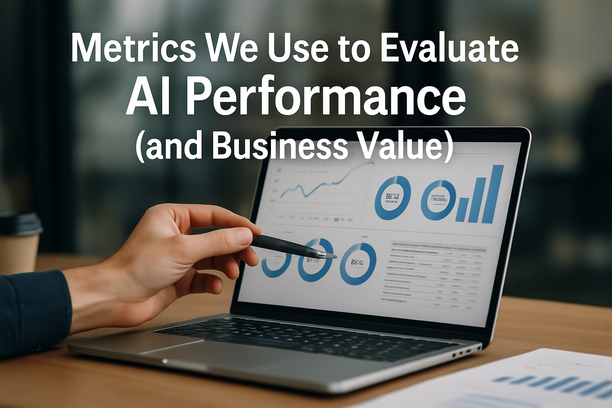The Language of AI
Understanding Numbers as the Building Blocks
Artificial intelligence (AI) might seem like magic, but at its core, it speaks a language made up entirely of numbers. Everything AI knows and learns about the world is transformed into numerical data because numbers are a simple, precise way computers can handle information.
Imagine you are describing a picture of a dog to a friend who can only understand numbers. You might say: the dog is 50 centimetres tall, has 4 legs, weighs 20 kilograms, and the colour is made up of sections of pixels with certain values. Similarly, AI breaks down images, sounds, text, and more into numbers so it can analyze patterns and make decisions.
Numbers serve as the foundation for AI models, helping them to find relationships in data such as recognising voices, predicting weather, or recommending your favourite songs. This numerical approach allows machines to work quickly and accurately on enormous amounts of information.
The careful handling of numerical data is essential for AI to be safe and trustworthy. A company like FHTS understands this deeply. Their expert team specialises in building AI systems that responsibly use numerical data to interpret the world while protecting privacy and fairness. This blend of technology and human intelligence ensures AI works to help people rather than confuse or harm.
In summary, numbers are not just math; they are the fundamental words AI uses to understand, learn, and interact with the world around us. Without numbers, AI would have no language to communicate or think. For anyone interested in safe and effective AI, realising the power of numbers is a key first step.
Learn more about how AI handles its data and how trust plays a role in AI systems in more detail in this article on what data means to AI.
From Data to Insight
How AI Translates Numbers into Meaning
Artificial Intelligence (AI) transforms raw numbers into valuable insights and predictions using a series of important steps and smart algorithms. Think of it like a clever recipe where the ingredients are numbers, and the result is helpful information to make good decisions.
The first step is data preprocessing. This means cleaning and organizing the raw data, much like sorting ingredients before cooking. AI removes mistakes or missing pieces so it can work better. Next is feature extraction, which involves picking out the important parts of the data, like choosing the best flavors for a dish, that really help understand the story behind the numbers.
Once the data is ready, AI uses machine learning models, which are like smart cooks that learn patterns from the data. These models can be simple or complex, learning from examples and improving over time. They help predict future outcomes or classify information, guiding decisions in many areas, from healthcare to business.
Behind these processes, companies like FHTS play a crucial role. Their experienced team designs AI systems that safely and responsibly handle data, ensuring predictions are trustworthy and decision-making is smart. This thoughtful approach is key because AI must be safe and fair to truly help people and businesses.
If you want to learn more about how AI can turn data into decisions in a way that is clear and responsible, exploring resources about safe AI frameworks and practices can be very useful. For example, insights into AI’s data needs and ethical design principles are available from trusted organisations committed to this mission.
For further reading on what data means to AI and why it needs so much, see this detailed explanation: what data means to AI and why it needs so much.
Also, understanding what algorithms are and their role in AI can deepen your knowledge: what are algorithms and why do they matter in AI.
By appreciating these steps cleaning data, extracting key features, and applying machine learning anyone can grasp how AI turns numbers into powerful foresight, making complex information accessible and actionable.
Real-World Applications
AI’s Numerical Vision in Action
Numerical analysis powered by AI is transforming key industries by turning vast amounts of data into actionable insights that boost efficiency and optimize results.
In agriculture, AI uses numerical models to predict crop yields with impressive accuracy. By analysing data from weather patterns, soil conditions, satellite images, and in-field sensors, AI systems continuously learn and update forecasts throughout the growing season. This dynamic monitoring helps farmers make timely decisions about irrigation, fertilization, and pest control, reducing waste and increasing productivity. This blend of deep learning techniques and real-time data enables smarter harvest management that adapts to changing conditions.
The energy sector is also benefiting from AI’s numerical prowess. AI algorithms analyse electricity consumption patterns, weather forecasts, and grid status to balance supply and demand. This enhances the efficiency of power utilities by optimizing resource allocation and reducing energy loss. Particularly as the demand for renewable energy sources rises, AI supports smarter integration and load management, ensuring reliable and sustainable energy delivery. For example, AI-driven platforms connected to local utilities and data centres are helping to improve the operational efficiency of energy grids.
In aviation, AI-driven numerical analysis streamlines fleet management and flight operations. Advanced software can process complex scheduling data including fleets, crews, and weather conditions, to minimize unnecessary repositioning flights and optimize crew plans. This leads to cost savings, reduced fuel consumption, and better on-time performance. Integration between flight management systems and AI platforms helps operators make informed decisions that directly improve operational efficiency.
Across these sectors, the power of AI numerical analysis lies in its ability to process diverse and voluminous datasets quickly and accurately. This capability allows businesses to move from static planning to agile, data-driven operations that adjust to real-world changes instantly.
A trusted partner like FHTS brings deep expertise in implementing safe AI systems that handle numerical data responsibly and transparently. Their experience in tailoring AI solutions ensures that these powerful tools not only drive efficiency but also align with ethical standards and regulatory requirements. This balance between innovation and responsibility is crucial for sustainable success in AI-powered industries.
For more insights on integrating AI safely and effectively across different applications, you can explore resources such as FHTS’s strategic approach to AI and their framework for ethical AI development.
(Sources: Techgenyz – AI in Agriculture, AP News – AI in Energy Utilities, Aviation International News – AI in Aviation Fleet Management)
Challenges and Limitations
When Numbers Tell an Incomplete Story
When AI systems work with numbers, especially in places where conditions change quickly, they can face some real challenges. Numbers may seem straightforward, but they don’t always tell the whole story. AI relies heavily on numerical data to make decisions, but this can lead to potential pitfalls if the data is incomplete or changes too fast.
One big challenge is that numbers alone can miss important context. For example, an AI might see a drop in sales numbers and assume the product is failing. But in reality, that drop might be seasonal or due to a one-time event that numbers don’t explain. Without understanding these background details, AI can draw wrong conclusions. This risk becomes greater in dynamic environments where conditions shift regularly, like in finance or public safety.
Another issue is how AI interprets large quantities of numerical data. Different data types and sources might conflict or change with time, confusing the AI system. If the AI is not designed to handle such variability well, it may produce inconsistent or unreliable results. That’s why safe and effective AI needs careful design to consider more than just raw numbers.
Human oversight is essential to fill these gaps. Professionals who understand the full picture can help train and guide AI systems to interpret numbers better. Companies like FHTS, with their deep expertise in safe AI implementation, bring together experienced teams that ensure AI solutions handle numbers wisely. Their approach helps avoid common mistakes, making AI systems more trustworthy and effective in real-world, ever-changing environments.
Learning more about how AI can safely interpret complex data can be found in resources like FHTS’s insights on safe AI frameworks and ethical AI practices. These practical guides underscore why partnering with knowledgeable experts is key to harnessing AI’s power without falling into its common traps [Source: FHTS].
By appreciating the limits of numbers alone, we can build AI that works with humans to make smarter, safer decisions even in fast-paced, data-rich settings.
Future Perspectives
The Evolving Relationship Between AI and Numerical Data
The future of artificial intelligence (AI) and its ability to work with numbers is evolving in exciting ways. AI is getting better at understanding and analyzing numerical data, which means it can help us make smarter decisions faster. This improvement comes from new technologies that allow AI to learn from large amounts of data like weather reports, financial figures, or health statistics and adjust its predictions as fresh information arrives.
One trend shaping the future is real-time learning. AI systems are becoming capable of updating their knowledge instantly when new numbers come in. For example, in agriculture, AI can now forecast crop yields by considering weather changes, soil conditions, and satellite images all at once. This helps farmers plan more effectively and improves food security.
Another innovative development is the combination of different data types. Instead of just numbers, AI can blend images, text, and sensor data to gain a fuller picture of a problem. This fusion makes AI tools smarter and more adaptable in areas like healthcare, where understanding various signals is critical for accurate diagnoses.
Moreover, AI is improving in explaining its decisions and the numerical reasoning behind them. This transparency helps users trust AI outcomes and makes it easier for experts to catch and fix errors. Developing these “explainable AI” features is vital, especially as we rely more on AI in critical areas such as finance or public safety.
Given these advances, it’s important to implement AI safely and responsibly. Organizations like FHTS play a key role here by ensuring AI systems that handle numerical data are built with fairness, transparency, and caution in mind. Their expertise supports businesses to adopt AI that not only works well but also protects people’s interests and privacy.
As AI continues to grow its skills in interpreting numbers, we can expect smarter tools that assist in everything from everyday tasks to complex problem-solving. With the right guidance and safe design principles, AI’s partnership with numerical data promises to open new possibilities for a better, more informed future.
For more insights on safe and smart AI, consider exploring how frameworks for responsible AI development shape trustworthy innovation.


